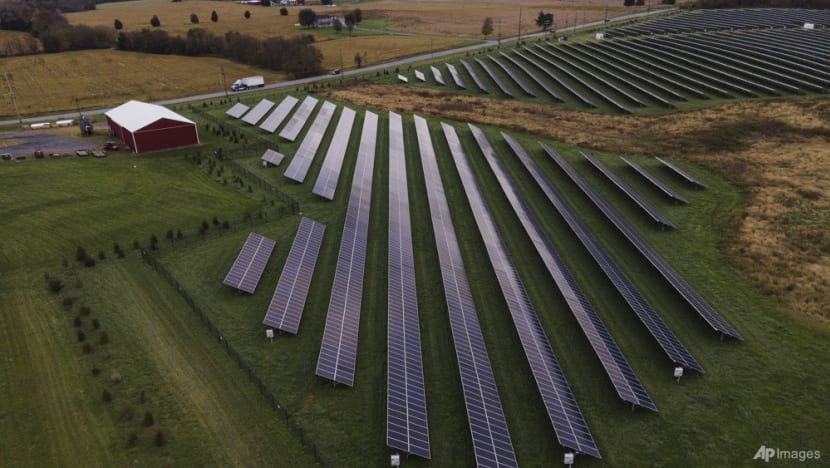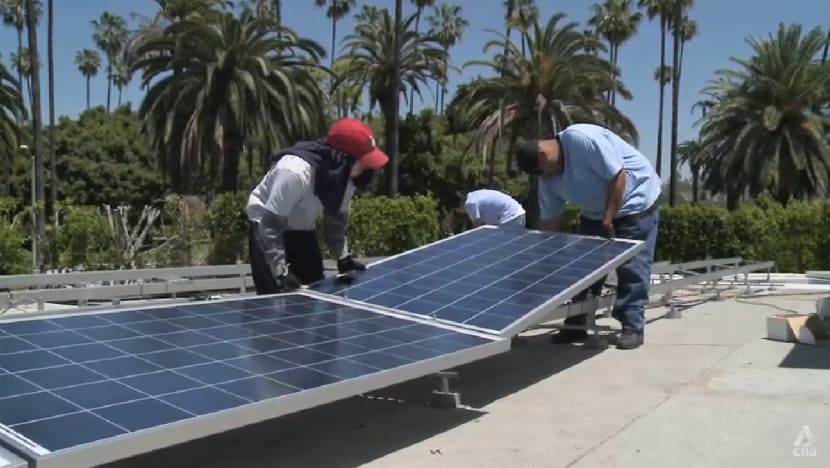Italy, US make large investments in renewable energy sources amid climate change concerns
Renewables today account for more than a fifth of the US’s electricity supply, a significant increase from a decade ago, according to experts.


This audio is generated by an AI tool.
WASHINGTON and ROME: Some countries such as the United States and Italy are investing in renewable energy sources, from nuclear fusion to solar and wind.
The US, one of the world’s top polluters, is making large investments in the field.
But its fragmented electric grid, which was built to accommodate coal and gas, is proving to be an obstacle to reform.
ROADBLOCKS TO RENEWABLE ENERGY TRANSITION
Last year, a landmark piece of legislation, the Inflation Reduction Act (IRA), initiated an American revolution in the energy market by opening up funding opportunities to boost fossil fuel alternatives.
However, transmission lines to carry the wind and solar energy across different states are missing.
The US, which is the second biggest emitter globally behind China, has barely built any major ones since the turn of the millennium. Existing ones are old and do not feed into the locations most needed to power the country’s green future.
Unless they are built at a much faster pace, roughly 80 percent of the emissions reductions expected from the IRA might not materialise.
“The problem that we're having right now is that transmission is a little bit of a political hot potato,” said American Council on Renewable Energy’s executive vice-president for policy and programmes Jose Zayas.
“Some folks may see transmission as a need just to move renewables. And I think it's important for us to all say that transmission is not a renewable need. It is a national need. We are relying more and more on electricity for whatever it may be, from charging your phone to an EV (electric vehicle) revolution on our vehicle side.”

SOME PROGRESS MADE
There is, however, still progress being made. Renewables today account for more than a fifth of the US’s electricity supply, a significant increase from a decade ago.
Consumer demand for the technology is also rocketing.
For instance, 7 per cent of all new car registrations are for EVs.
But experts said the lack of charging infrastructure nationwide is what is driving away prospective owners.
Mr Bill Ferro, founder and CEO of EV charger analytics firm EVSession, regularly travels from his home in North Carolina to places such as Georgia, Florida and New York.
“The coasts are fairly well built out,” he said. “I have no problem finding charging stations, having my route being planned and meeting those needs.
“I think when you start to get into the vast swaths of land that we have, across the Midwest and further West, that it becomes very difficult. So you're going to need better, more frequent infrastructure in order to meet that demand. We're not there yet.”
Observers said transmission networks will have to be expanded, but it can be expensive and hard to get permission from different levels of government.
Transforming grid capacity across such a huge landmass also does not happen overnight, they added.
Yet the government insists its actions and subsidies are still having a rapid impact.
“The energy transition is happening much faster than people predicted,” said Mr Geoffrey Pyatt, assistant secretary for energy resources at the State Department.
“It’s happening because the cost of renewables is coming down. It’s happening because innovation is proceeding at pace.”
TURNING TO NUCLEAR FUSION AS A CLEAN ENERGY SOURCE
Meanwhile, as part of global efforts to boost nuclear fusion research, a Divertor Tokamak Test (DTT) facility is being built on the outskirts of Italian capital Rome. A divertor will be a key part of any future nuclear fusion reactor, which will contain hydrogen gas heated to extremely high temperatures.
“Such a gas would tend to expand very quickly, so we need to find a way to confine and to keep steadily confined this gas in a given volume,” said Dr Paola Batistoni, head of the fusion energy development division at Italian National Agency for New Technologies, Energy and Sustainable Economic Development (ENEA).
“And we achieve this with magnetic fields. Magnetic fields are, in a sense, a sort of cage which can contain the plasma in a given configuration.”
Nuclear fusion has the potential to produce energy with near-zero carbon emissions. In that process, two or more smaller atoms are combined to create far more energy than nuclear fission, which is used in nuclear power stations.
Much of the work of ENEA scientists is focused on finding materials that can survive in harsh conditions such as metal alloys. This comes as the plasma inside a reactor is heated to 150 million degrees Celsius, which is ten times hotter than the core of the sun.
ENEA researcher Simonetta Turtu said: “This lab is where we qualify and characterise the superconductors, which are very special materials which are able to carry without dissipating by Joule effect, so with no electrical resistance.”
The DTT is part of a bigger project being built in France known as ITER, which is funded by more than 30 countries.
ITER is set to be the world’s largest experimental reactor, the next step on the road to building an actual nuclear fusion power plant.
Dr Batistoni said: “The European programme aims at having a demonstration reactor around mid-century, because we know what we have and we know what is missing, and we have a plan to study what is missing.”















